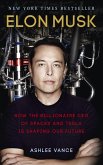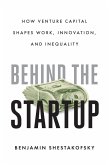Being a scientist has changed dramatically in recent times. Through patenting and commercialization, scientists today can develop their work beyond a publication in a learned journal. Indeed, universities and governments are encouraging today's scientists and engineers to break their research out of the laboratory and into the commercial world. However, doing so is complicated and can be daunting for those more used to a research seminar than a boardroom. Start-ups are journeys into uncertainty and entrepreneurs are individuals who are comfortable with uncertainty, thrive on challenges and are prepared to take risks.
This book, written by experienced scientists and entrepreneurs, deals with businesses started by scientists based on innovation and sets out to clarify for scientists and engineers the steps necessary to take an idea along the path to commercialization and maximize the potential for success, regardless of the path taken.
The difference between a scientist and an entrepreneur is discussed as is the consequence to an enterprise of misunderstanding this difference. The various roles in which an entrepreneur can act are discussed, as are the types of business that a scientist can start. The concept of patent protection is explained as is the process of applying for a patent. The authors take the reader through the need for a business plan and give examples of how such a plan might look. Fundraising is discussed at length with attention focussed on sources of funding and the technique of 'pitching' for funds. Managing a start-up is explored and the function and roles within the management team are discussed.
This book, written by experienced scientists and entrepreneurs, deals with businesses started by scientists based on innovation and sets out to clarify for scientists and engineers the steps necessary to take an idea along the path to commercialization and maximize the potential for success, regardless of the path taken.
The difference between a scientist and an entrepreneur is discussed as is the consequence to an enterprise of misunderstanding this difference. The various roles in which an entrepreneur can act are discussed, as are the types of business that a scientist can start. The concept of patent protection is explained as is the process of applying for a patent. The authors take the reader through the need for a business plan and give examples of how such a plan might look. Fundraising is discussed at length with attention focussed on sources of funding and the technique of 'pitching' for funds. Managing a start-up is explored and the function and roles within the management team are discussed.
Dieser Download kann aus rechtlichen Gründen nur mit Rechnungsadresse in A, D ausgeliefert werden.









